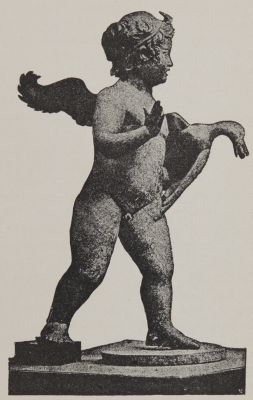
Title
CaracallaArtist
UnknownPublication
A Day in Ancient RomeDate
1885Process
HalftoneImage Size
7 x 8.8 cm
Any half-tone book prior to 1890 is unusual and represents the earliest period of this form of printing in the United States. Many early examples have the half-tones printed on sheets, separate from the text, which is not the case here. The Half-tone caused a second revolution—in the type of paper used in books and magazines. Half-tones printed best on a smooth calendered paper that was glossy; since magazines prior to this used soft papers, it was necessary to change completely the paper used for the half-tone illustrations that rapidly became ubiquitous. [1]
References
[1] Hanson, David Checklist of photomechanical processes and printing 1825-1910, 2017

